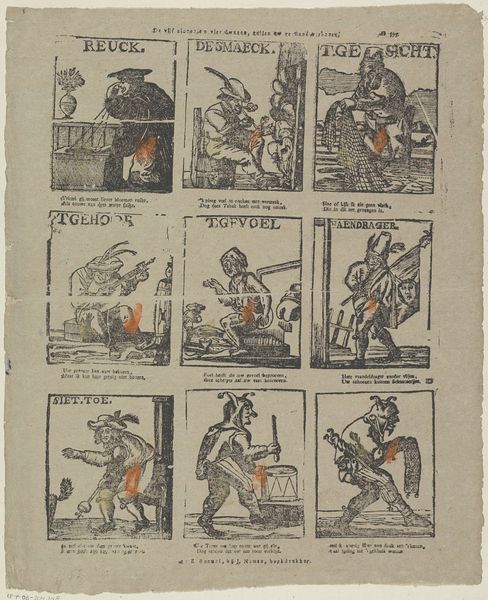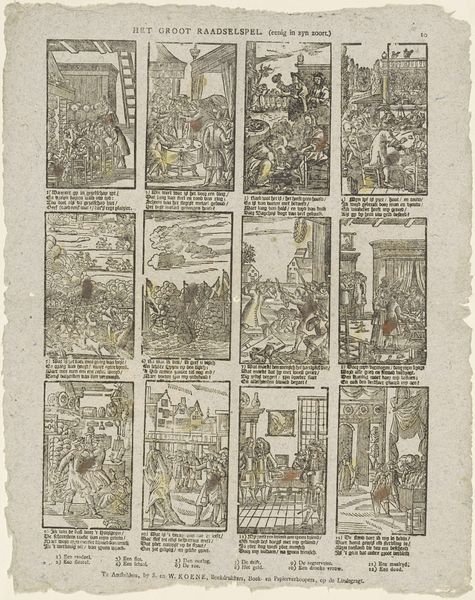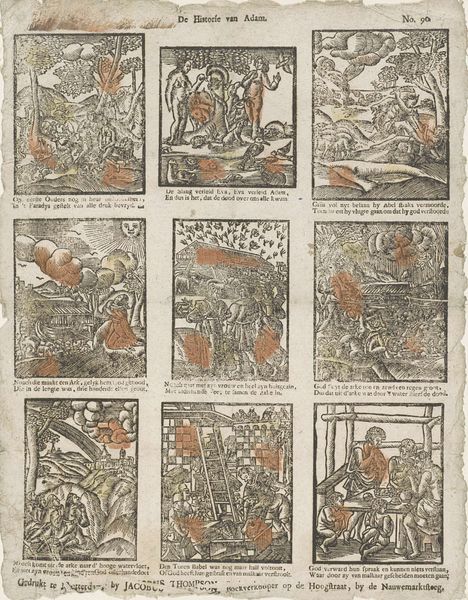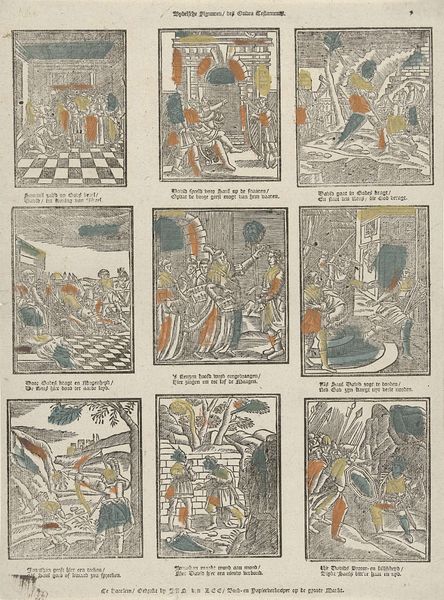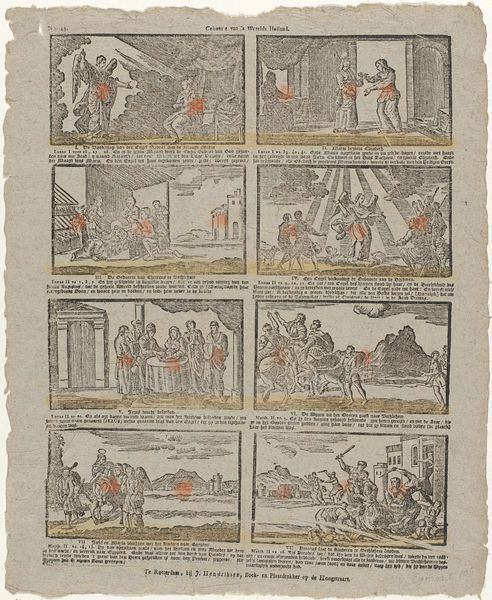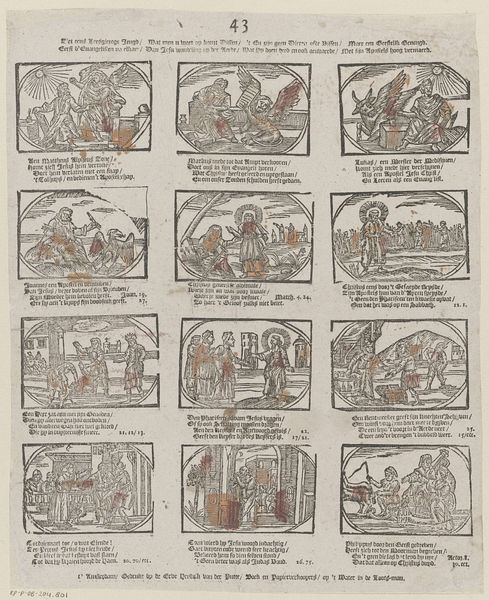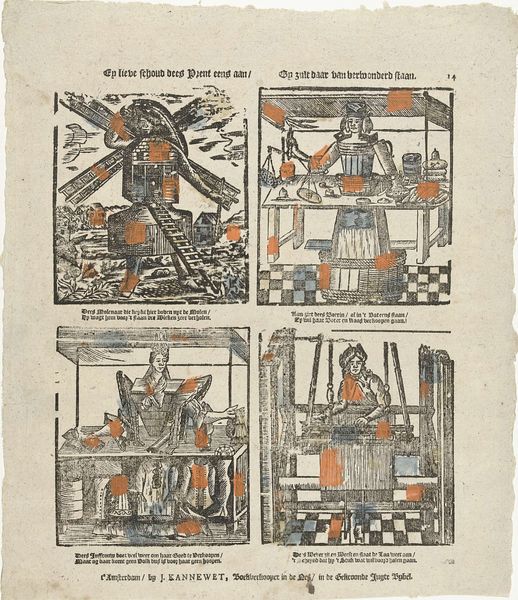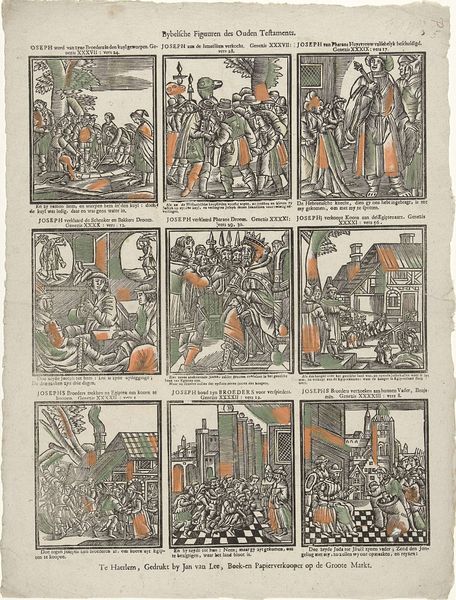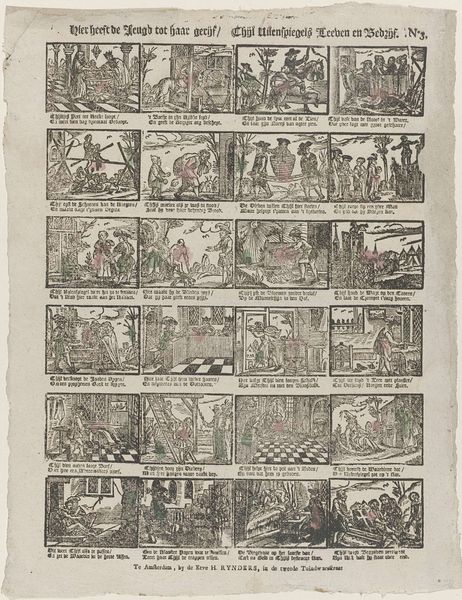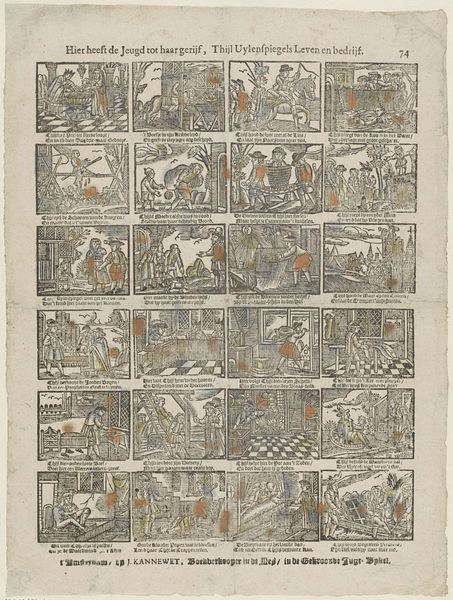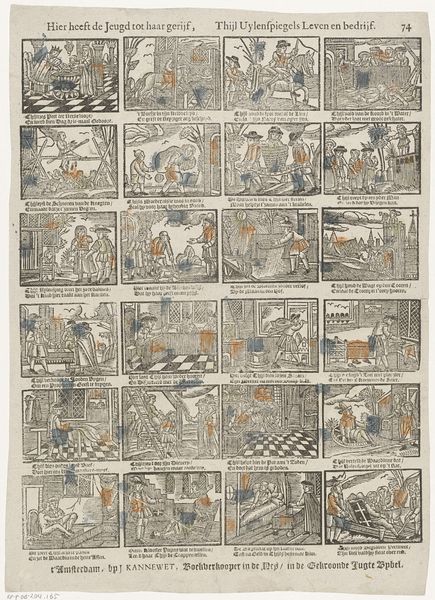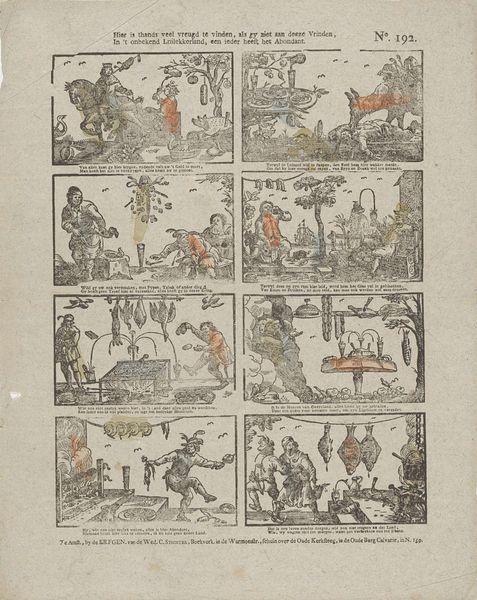
Ey lieve schoud dees prent eens aan / Gy zult daar van verwonderd staan. 1725 - 1780
0:00
0:00
print, weaving, textile, engraving
#
narrative-art
#
dutch-golden-age
# print
#
weaving
#
old engraving style
#
textile
#
genre-painting
#
engraving
Dimensions: height 335 mm, width 262 mm
Copyright: Rijks Museum: Open Domain
Editor: This engraving from sometime between 1725 and 1780, titled "Ey lieve schoud dees prent eens aan / Gy zult daar van verwonderd staan," and created by Johannes (II) Kannewet, feels like a glimpse into another world. It’s compartmentalized into four scenes, each depicting a different trade. What cultural symbols or ideas jump out at you? Curator: What strikes me immediately is how each of these trades—miller, merchant, tailor, and weaver—are presented almost as allegories, using the tools and spaces of work to convey a moral or societal message. Do you notice how the windmill, in the first scene, has anthropomorphic qualities? Editor: Yes, I see it! It's like the windmill *is* a person. Curator: Precisely! The engraving weaves together industry and humanity. Look at the checkerboard patterns that ground several scenes; these repeating motifs, like the spinning wheel itself, can suggest cycles of labor but also the repeating patterns of life and social order. Does the text offer more insights? Editor: The OCR reads (in translation): "Kindly look at this print / You will be amazed." And then each panel has a small verse underneath in Dutch. Curator: And what do *you* make of that invitation, and the verses beneath? How might these images and accompanying text shape someone's understanding of their place within Dutch society at the time? We must always remember that such symbolic representations of labor aren’t neutral; they reflect the values and hierarchies of their era. Editor: I never would have looked so closely, thinking about how symbols might define societal roles. This reminds us that images do more than show; they tell stories about who we are, or who we're meant to be. Curator: Exactly, understanding these symbols unveils how identity and labor were intertwined in the 18th century Dutch consciousness. This encoding of symbols helps transmit shared knowledge from one generation to the next.
Comments
No comments
Be the first to comment and join the conversation on the ultimate creative platform.
